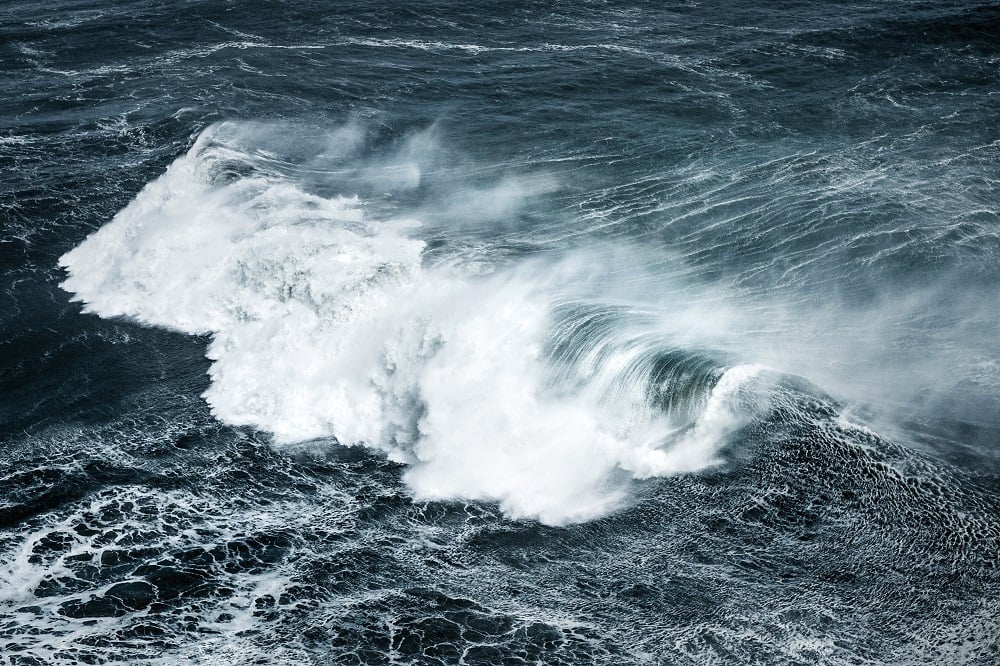An eye on the ocean: how are waves formed?
Interesting facts about a captivating natural phenomenon
Because waves are both impressive and frightening, they have always fascinated both children and adults. Every summer, many people let themselves be carried away by the rhythm of the ocean, surf on its waves or admire its moves that are equally graceful and spectacular. However, you must remain cautious and check your tide clock before every seaside outing. But how are waves formed? Here are a few explanations to understand the phenomenon better.
When the weather gets involved
What makes this constant water dance happen? To provide us with this beautiful scenery, the ocean has opted for the right partner.
To know who it is, all you have to do is look up and contemplate the sky, because indeed air and water are two complementary elements. Let us now focus on the weather which plays an essential role in the origin of waves.
Everything starts when a depression forms above the oceans, it is indeed a zone of low pressure which actually creates clouds and rainfalls. This depression will clash with the anticyclone (zone of high pressure and good weather). It is at this precise moment that the wind butts in by moving the anticyclone’s air towards the depression in order to rebalance the atmospheric pressure difference.
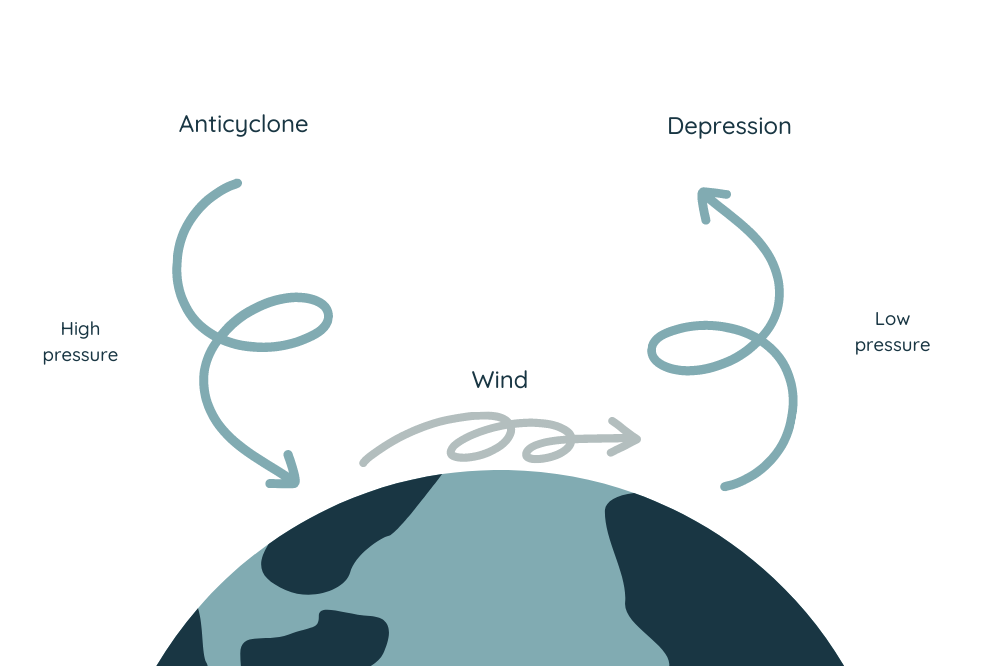
In case you wondered, you are not reading a weather forecast. :) So, what is the link between waves and wind? Precisely, it is these fluctuations of atmospheric pressure and the wind that will create some irregularities on the water surface. The wind will rush into slight undulations and thus increase the wave’s power thanks to its energy and eventually generate a swell which will possibly reach the shore.
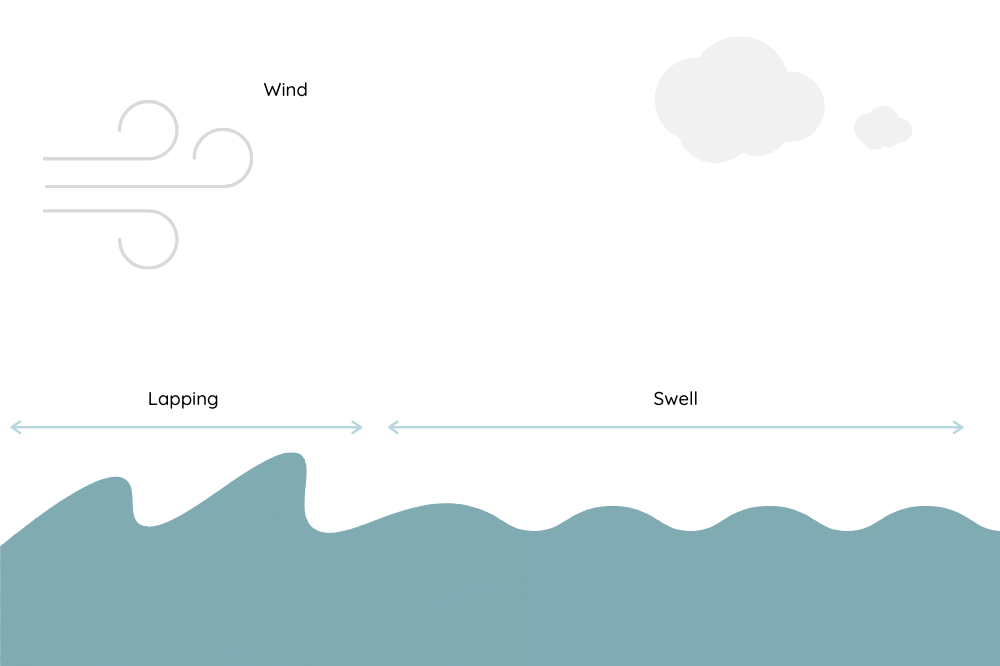
Indeed, the wind starts it all but its deed does not stop here…
The swell, from the open sea to the shore
Swell starts to form in the open sea thanks to the wind that blows on the water surface, but how can it reach the shore and generate these waves that we love so much?
What is the swell about? It is a regular undulation on the sea’s water surface formed by a faraway wind that creates wave trains on long distances. Here, we are not confronted to water movement but to energy movement. The impression we have that the water moves horizontally in the shape of waves is wrong as it is only the wave of energy that actually moves. As for water, it only accompanies the vertical movement of the energy wave.
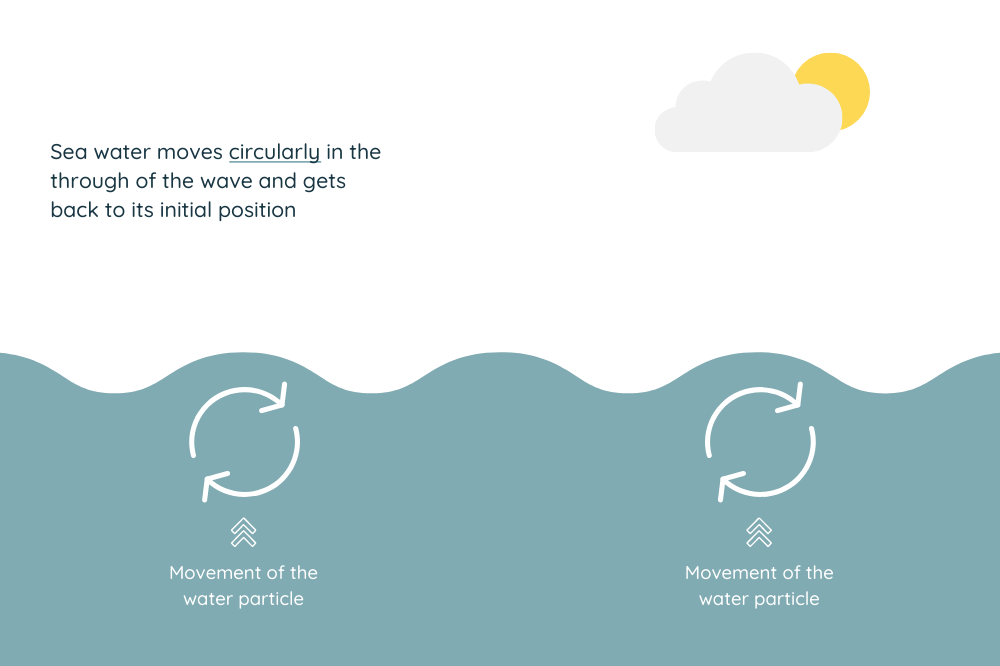
In order for the swell and its waves to reach the shores, several parameters are to be taken into account: the wind’s force and duration as well as the distance it travelled by sea. It is over this very distance, called Fetch, that the wind will create undulations, lapping and waves. Bigger the distance, bigger will the swell and waves become. That explains why the swell in lakes and seas are very light, compared to the one found in the oceans, because the surface of water is smaller.
Once the swell approaches the shore, it comes across other elements which also play an important role in the formation of waves.
From the rise to the breaking of waves
The swell’s journey is not smooth. All along the journey, it will undergo some alterations and see waves, more or less powerful, form until they break onto the shore.
On its way, it will be confronted to the strength of local winds. These zones, called “wind seas”, will alter the swell’s features by creating stronger and higher waves. Once the waves leave these zones, they will become less choppy and will get back to their regular aspect and create a new swell.
Even if the wind plays an essential role in the formation of waves, it is not the only parameter to shape them. So, what is this new element that comes in? Well, it is from the depths of the ocean that the seabed joins in.
During its journey, the swell will rub the seabed. This rubbing will slow down its undulation speed while increasing the swell vertically to eventually build up waves when approaching the shore.
Near the shore, the shape of the seabed will influence the breaking of waves. If the floor rises too abruptly, the wave will then get higher and will break bluntly.
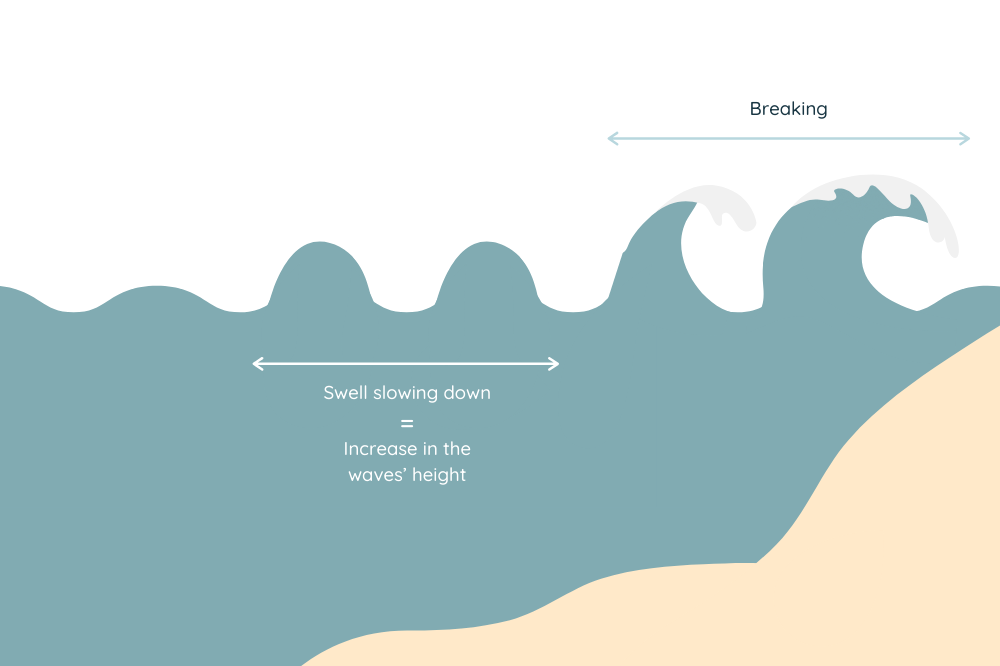
On the opposite, if the floor is slightly sloped, then the waves will start to break far away from the shore and over a long distance. A wave breaks once its ridge moves faster than its base and therefore it can measure a few centimetres or up to more than 30 metres in height.
That is the way breaking waves are formed, which we like to contemplate on the seaside. However, other types of waves also exist and they form differently:
- Tide waves: very scary, these very tall waves which swarm over the shore can create substantial damage. They may be caused either by a storm, we use the term “storm surge”, or an earthquake, volcanic eruption or even a landslide (in this precise situation we speak about tsunamis).
- Tidal bores: those waves have the particularity of going up rivers from their very mouth because of high tide. This phenomenon can turn out to be dangerous for seafaring.
- Rogue waves: these very sudden and tall waves look like very high waterwalls of strong pressure and they emerge in the open sea and can cause important damage to ships.
As you can see, the ocean can turn out to be dangerous. However the ocean remains the favourite playground of many seaside lovers and it regularly shows us beautiful sceneries.
We hope these few clarifications have enabled you to understand better the formation of waves which happens to be a very complex phenomenon. Wish to learn more about the ocean’s secrets? Discover all our articles dedicated to our beloved ocean.

